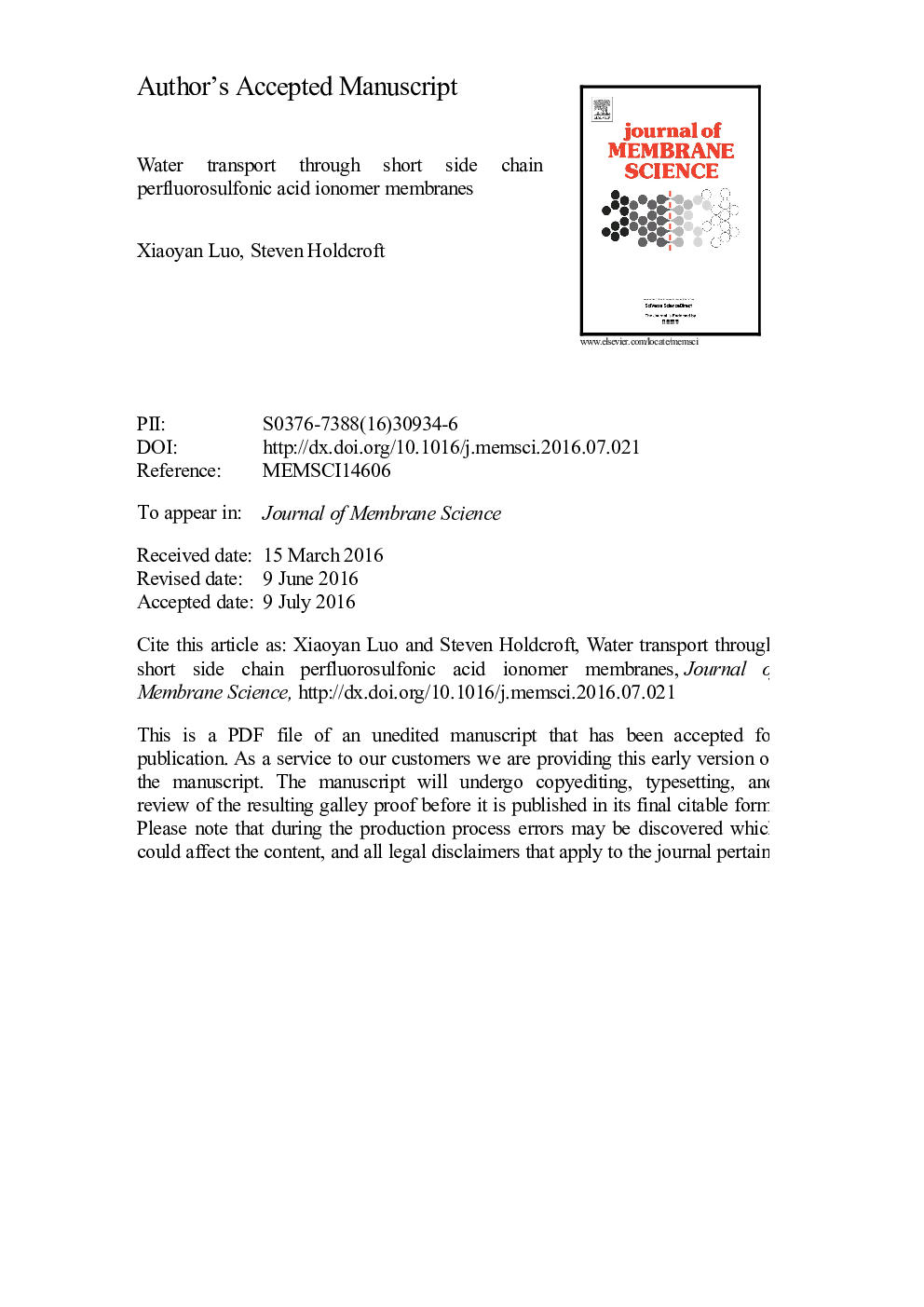| کد مقاله | کد نشریه | سال انتشار | مقاله انگلیسی | نسخه تمام متن |
|---|---|---|---|---|
| 632155 | 1455979 | 2016 | 30 صفحه PDF | دانلود رایگان |
عنوان انگلیسی مقاله ISI
Water transport through short side chain perfluorosulfonic acid ionomer membranes
ترجمه فارسی عنوان
حمل و نقل آب از طریق زنجیره جانبی کمپلکس فلوئورسولفونیک اسید آینومر
دانلود مقاله + سفارش ترجمه
دانلود مقاله ISI انگلیسی
رایگان برای ایرانیان
کلمات کلیدی
موضوعات مرتبط
مهندسی و علوم پایه
مهندسی شیمی
تصفیه و جداسازی
چکیده انگلیسی
Liquid and water vapour transport through short side chain (SSC) perfluorosulfonic acid (PFSA) ionomer membranes are measured as a function of membrane thickness (24-96 µm) and temperature (25-85 °C). Three types of water permeation techniques are used in this work and are based on applied chemical potential gradients across a membrane. These are: liquid-liquid permeation (LLP) in which both sides of membrane are in contact with liquid water; liquid-vapour permeation (LVP) where one side of the membrane is exposed to liquid and the other is exposed to vapour; and vapour-vapour permeation (VVP) where both sides of the membrane are exposed to water vapour. Within the SSC series, the increase in permeance for VVP upon decreasing membrane thickness is not as significant as compared to LLP due to the larger interfacial water transport resistance (Rinterfacial) observed for membranes exposed to vapour. The study of LVP and VVP transport resistances indicates that Rinterfacial plays dominate role in determining the overall membrane resistance, even for a thick SSC membrane. It is speculated that Rinterfacial is the result of water depletion layer caused by membrane dehydration at the membrane interface. The LVP interfacial resistance for SSC membranes is similar to that found for long side chain PFSA ionomer membranes such as, Nafion®, even though SSC membranes possess significant lower internal LVP permeation resistance. Water permeance determined by LLP, LVP and VVP measurements are all found to increase with temperature, due to the increased water volume fraction (Xv) and an increase in the effective hydrophilic pore size. The activation energy of LLP, LVP and VVP water permeation are calculated to be 16.3, 40.2 and 43.1 kJ molâ1 respectively, which is lower than that of Nafion under similar conditions.
ناشر
Database: Elsevier - ScienceDirect (ساینس دایرکت)
Journal: Journal of Membrane Science - Volume 520, 15 December 2016, Pages 155-165
Journal: Journal of Membrane Science - Volume 520, 15 December 2016, Pages 155-165
نویسندگان
Xiaoyan Luo, Steven Holdcroft,
